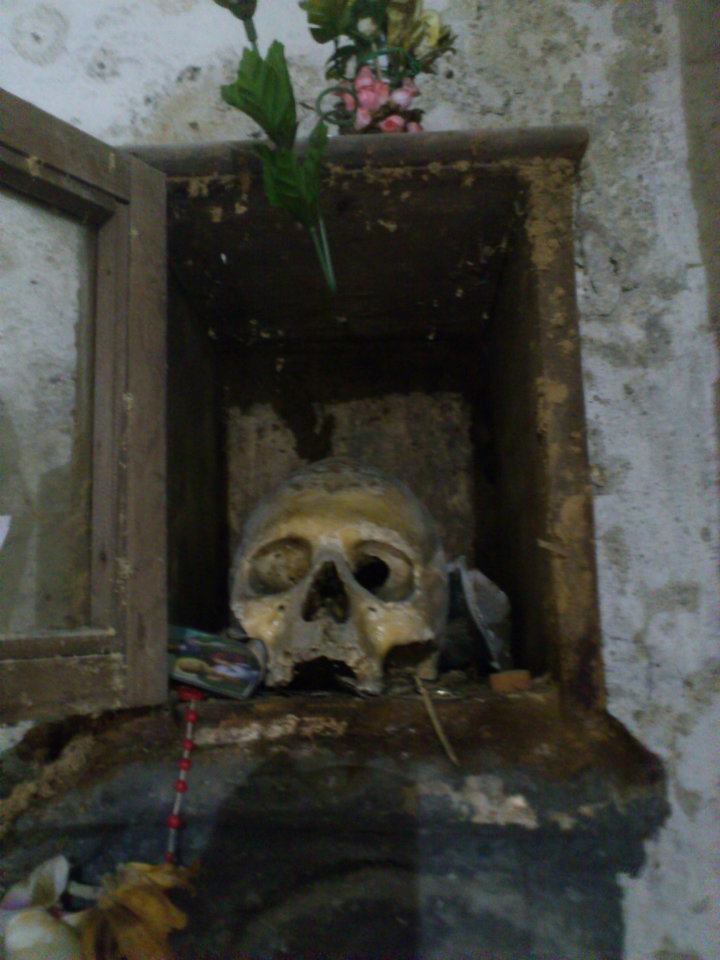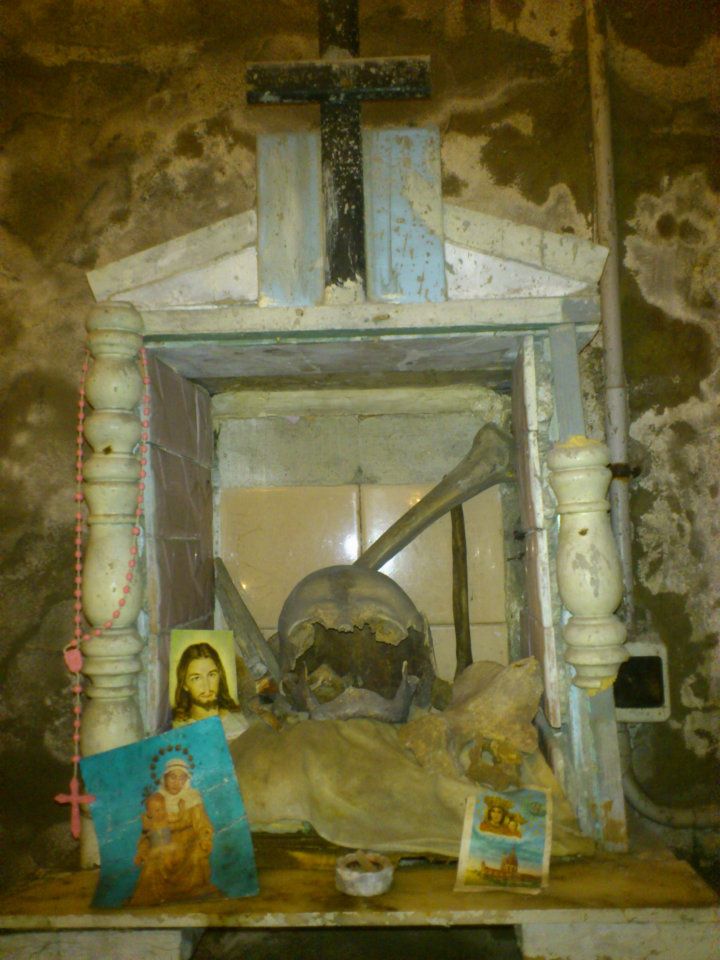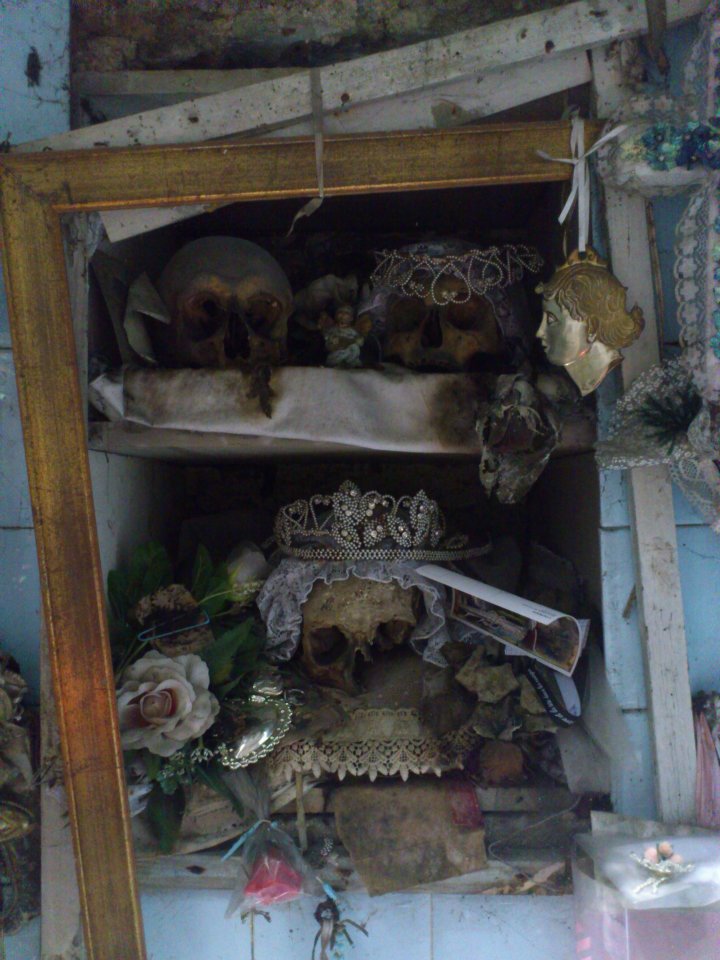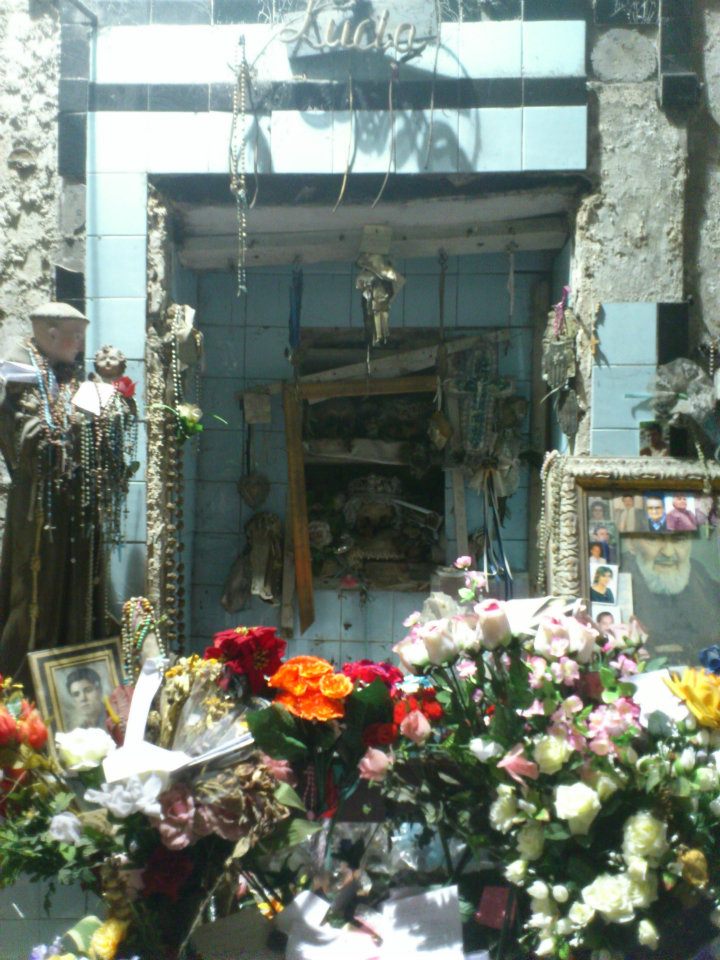I’d always been fascinated with death; not that I would ever understand why people die. I’d lost some important people in my life, but to me, still, death was a totally unnecessary, horrible, horrible thing. “Why had they gone and died on me?” was something I’d asked myself too many times. Yet, death fascinated me, so when Fabri told me the story of a church in Via dei Tribunali, I knew I’d have to visit it. I just thought I’d be visiting it with him… The church had a name that was a mouthful, but I loved saying it, attempting an Italian accent: Santa Maria delle Anime del Purgatorio ad Arco.
When I walked past this church for the first time, the day he brought me to the Napoli Sotterranea, and read the tourist sign at the front, I had goose bumps. He had laughed, held me, and helped me read the sign in Italian. According to the sign, the church had been built on two levels, to represent the two worlds: the first level represented the earthly and spiritual dimension; the lower level, a cold and spooky concrete crypt, represented the purgatory. He’d told me that the church had been built and used clandestinely by Catholic believers who would “adopt” a skull to take care of, and with their prayers, they’d help the dead get their souls free from the fire of Purgatory and ascend to Heaven. How noble and kind, I had thought.” ~ Carolina, in Loveandpizza.it - Chapter 42
(***)
Since the first time I went to Napoli, when my husband and I moved there to work, I had wanted to visit this church. It is really a mouthful of a name: Chiesa di Santa Maria delle Anime del Purgatorio ad Arco, which means Church of Saint Mary of the Souls of Purgatory (ad Arco). Not only the name is long enough for you to play tongue twister in Italian, the fact that there is a bronze skull right at the bottom of the church’s entrance steps always drew me to it.

Bronze skull at the foot of the stairs at the entrance (photo from personal album)
Like Carolina, I’ve always been fascinated with death; not in the morbid sense, if you know what I mean, but in all matters of what happens when we die. Out of laziness, I guess, or just having taken for granted that I’d have plenty of time to visit the church, I’d never really looked into what church that was. I’d read in our guide that there was a crypt, but that was all I knew. Funny, during the nine months we lived there, every time we went past to visit, it was closed.
It was only 3 years later, when I went back there to research for Loveandpizza.it, that I got to visit it. Like a good tourist, this time I had read about it on the Internet, and I knew exactly what to expect. As I waited for the tour guide, a young woman who I imagine was a university student, I walked around the small church, reading every single sign there was, and squeezing my hands together in anticipation. An important part of the novel was going to be written that night.
And it was just like that ... And I typed for hours in my room at the home of a real Neapolitan woman, my hostess for those two weeks of discovery. Pinned to my laptop screen, surrounded by explanatory leaflets, researching in depth about paintings and sculptures, reviewing the photos I had taken that afternoon, and remembering (and feeling all over again) every goosebump I had while listening to the guides' stories, I lost myself in the words and gave "life" to Lucia, who, with her infectious and youthful laughter and crazy plans, would help Carolina regain her love. (uh-oh spoiler alert!)
(from left to right, above: the skull that sweats and “The Captain”; below: the skull of Lucia, with letters, flowers and photos brought by devotees. Photos from personal album)

On the left:: my sister, Cíntia, who inspired the character of Carolina, and the bronze skull; top right: winged skulls, by Dionisio Lazzari; bottom right: “Virgin helps souls in Purgatory”, by Massimo Stanzione, 1638 (Photos from personal album)
Video and more information about the church (in Italian and English): : https://www.purgatorioadarco.it/en/





